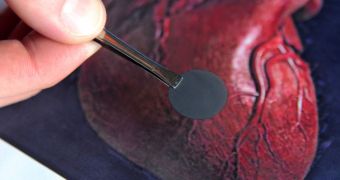A collaboration of researchers in the United States announces the development of a new instrument for treating heart attack victims. The device is a patch made out of carbon nanotubes (CNT), and its effects are very beneficial to patients, the team behind the study reveals.
Working together with colleagues in India, engineers with the Brown University were able to combine the CNT with a special type of polymer, in order to create the nanopatch, as they call the new device.
In a series of lab tests conducted at the university, experts found that heart tissue grown on this nanopatch was up to six times denser than tissue growing in control samples. At the same time, neuron density was found to have doubled in the test sample.
Details of the research paper were published in the latest issue of the esteemed scientific journal Acta Biomaterialia. This research is very important for people who suffered a heart attack, because such an event marks the death of at least a portion of the heart.
The most severely affected are nerve cells in the cardiac wall and spontaneously-expanding-and-contracting cells that allow the heart to beat in tune every time. Losing these cells means losing the abilities they underly, and this contributes to reducing the organ's life span.
What the new study did was identify a way through which these cells could be revived, rather than simply replaced, and nanotechnology seemed like a natural ally to turn to at the beginning of the work.
Using carbon nanofibers and a government-approved polymer, the international team developed a structure that resembles scaffolding, on which cardiomyocyte cells could grow. Tests showed a great deal of efficiency in underlying the regeneration of these tissues.
This is a more fancy way of saying that the team managed to resuscitate areas of the hearth that had, for all intents and purposes, been rendered useless. “This whole idea is to put something where dead tissue is to help regenerate it, so that you eventually have a healthy heart,” explains David Stout
The investigator holds an appointment as a graduate student at the Brown School of Engineering. He is also the lead author of the Acta Biomaterialia paper. If proven effective, the new treatment strategy could help as much as 785,000 people annually, in the United States alone.
Researcher Bikramjit Basu, from the India Institute of Technology Kanpur, contributed to this study. Funds for the research were collected from the Indo-US Science and Technology Forum and the Hermann Foundation.
Additional funds were secured from the Indian Institute of Technology, Kanpur, the government of India and the California State University.

 14 DAY TRIAL //
14 DAY TRIAL //